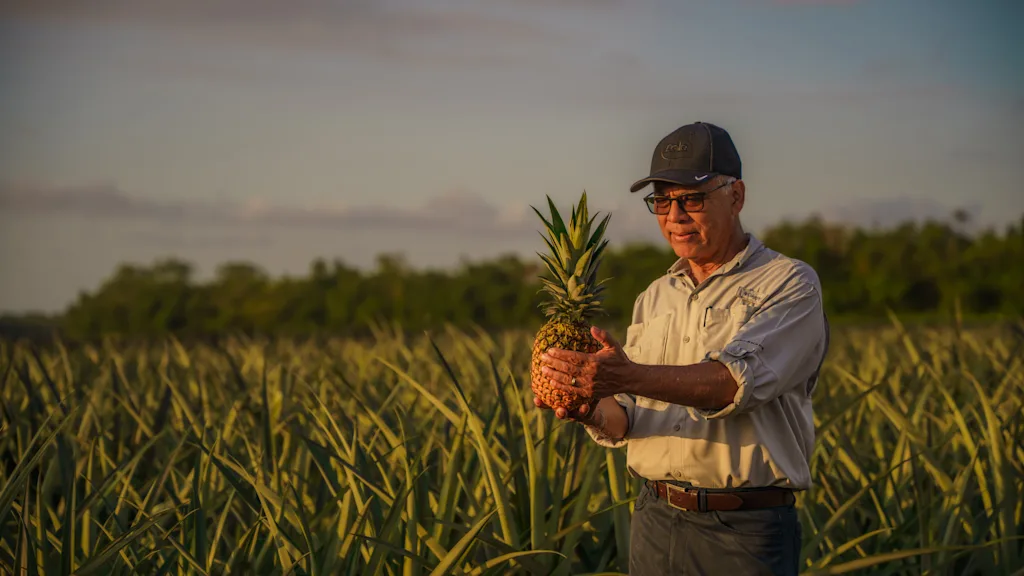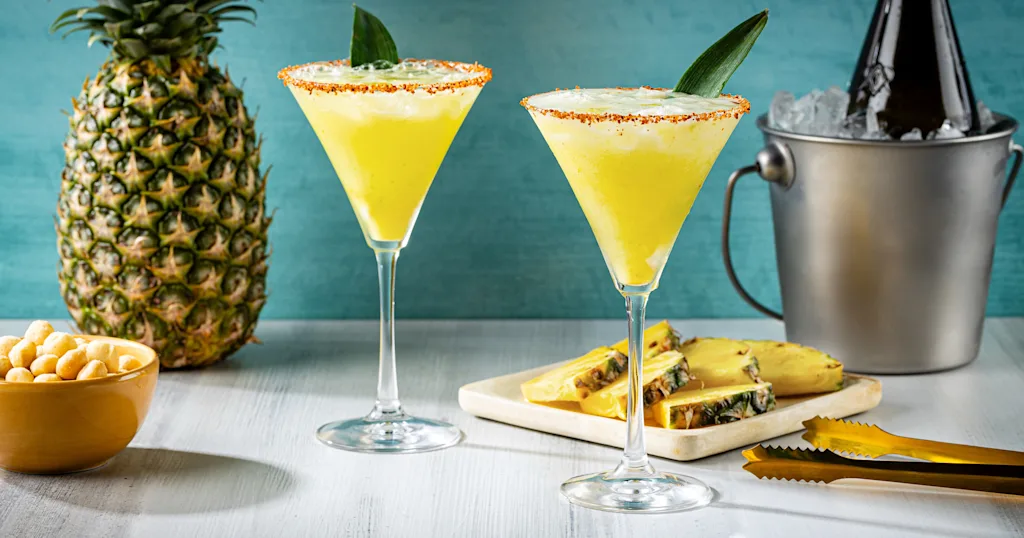
Dole invented a new fruit.
The Dole Colada Royale Pineapple is sweet and tangy with notes of coconut and, as the name suggests, piña colada. Unlike its golden yellow counterpart, the Colada Royale has a cream-colored pulp with a green-to-golden shell. It also took more than 15 years to get it just right. The suggested recipes the company released with the new fruit include snacks like a pineapple and coconut carpaccio and a basil-wrapped pineapple with pine zest. Clearly this is meant to be a luxury pineapple experience.
The fruit, which is now available in select grocery stores in the U.S. and Canada, is 100% non-GMO and naturally bred. The company didn’t share its suggested retail price, but the Colada Royale comes amid a wider trend toward “designer” pineapples. Just last year, Fresh Del Monte released a pink pineapple it called the Pinkglow, which it followed up with a $400 Rubyglow.

A new growing process
Developing new pineapples requires patience since the natural process can stretch out for nine years or more.
“You have to go through thousands of pollinations and develop thousands of seeds and then have the capacity to pinpoint that particular plant that combines what you are looking for,” says Roberto Young, director of pineapple breeding at Dole’s farm in La Ceiba, Honduras. He led the team that developed the Colada Royale variety.
The new pineapple also had be grown in different seasons, since temperature can affect the taste of the finished product. All in all, that means it takes thousands of attempts that go wrong in hopes of getting one that goes right.

“Usually, you have to discard most of the fruit because it could taste very good during the summer, but in the winter you cannot really taste it because it’s too tangy, it’s very acidic,” Young tells Fast Company.
Plant breeders consider factors like size, productivity, and color as they’re developing a new product, but taste, of course, is the most important.
“It doesn’t help if the fruit is a good size, good productivity, but doesn’t taste like pineapple,” Young says.
Dole’s new pineapple had the right taste, but its cream-colored pulp was at first a concern since consumers today are used to yellow pulp in pineapples. At the produce and floral trade show in Anaheim, California, where Dole unveiled the Colada Royale in October, Young says people were hesitant about the fruit—until they tasted it. Then, he says, their reaction was “Wow, this is something different.”

Developing a new market
The goal from the beginning was to develop a unique flavor and bring something new to the market.
Pineapple is genetically very variable, Young says, and the biggest challenge was consistency. Plant breeding doesn’t have a high success rate—“If you are a plant breeder, you might be successful, or you might not,” he concedes—and pineapple is especially tricky since it has a relatively long harvest cycle.
The process requires first planting parents, which take about a year to produce flowers that can be pollinated. From there, it’s about five more months until the fruit can be harvested. The seeds from that harvest are then planted to get all new plants, repeating the cycle.

The results need to be repeatable to ensure the fruit can be mass-produced, so it takes at least three generations—roughly nine years—to develop a new product. The Colada Royale took longer, and Young, a Honduran native who’s been with Dole for 28 years, has been on the project from the start. He considers it his legacy.
“I feel really very, very grateful,” he says.
Dole is also looking at the new fruit as a legacy play of its own. The company plans to reinvest a portion of the proceeds of every box of the pineapple sold to create a community center in La Ceiba that will provide healthcare services, language classes, and vocational training.
In its most recent earnings report, Dole said its second-quarter 2025 revenue was $2.4 billion, an increase of 14.3% over the same period in 2024. The company is expected to report third-quarter financials on November 10.
Designer pineapples may sound like a novelty, but since they can be upsold, fruit growers and grocers alike may find they’re a sweet addition to the produce section.
